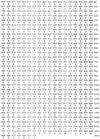Molecular mechanisms of fluconazole resistance in Candida dubliniensis isolates from human immunodeficiency virus-infected patients with oropharyngeal candidiasis
- PMID: 12019078
- PMCID: PMC127221
- DOI: 10.1128/AAC.46.6.1695-1703.2002
Molecular mechanisms of fluconazole resistance in Candida dubliniensis isolates from human immunodeficiency virus-infected patients with oropharyngeal candidiasis
Abstract
Candida dubliniensis is a newly identified species of Candida that is phenotypically similar to but genetically distinct from C. albicans. This organism has been recovered with increasing frequency from the oral cavities of human immunodeficiency virus (HIV)-infected and AIDS patients and has been implicated as a causative agent of oral candidiasis and systemic disease. In the present study we characterized the molecular mechanisms of resistance to fluconazole (FLC) in C. dubliniensis clinical isolates from two different HIV-infected patients with oropharyngeal candidiasis. Isolates were identified to the species level by phenotypic and genotypic tests. DNA-typing techniques were used to assess strain identity. Antifungal susceptibility testing was performed by NCCLS techniques. Northern blotting analysis was used to monitor the expression of genes encoding lanosterol demethylase (ERG11) and efflux transporters (CDR and MDR1) in matched sets of C. dubliniensis-susceptible and -resistant isolates by using probes generated from their homologous C. albicans sequences. In addition, ERG11 genes were amplified by PCR, and their nucleotide sequences were determined in order to detect point mutations with a possible effect in the affinity for azoles. Decreasing susceptibilities to FLC were detected in C. dubliniensis isolates recovered from both patients during the course of treatment. FLC-resistant C. dubliniensis isolates from one patient demonstrated combined upregulation of the MDR1, CDR1, and ERG11 genes. Among the isolates from the second patient, all isolates showing decreased susceptibility to FLC demonstrated upregulation of MDR1, whereas the levels of mRNA for the ERG11 genes remained constant and the expression of CDR genes was negligible. Fourteen point mutations were found in the ERG11 genes of the isolates with decreased susceptibility to FLC. These data demonstrate that the development of azole resistance in C. dublinensis clinical isolates from HIV-infected patients treated with FLC is mediated by multiple molecular mechanisms of resistance, similar to the observations found in the case of C. albicans.
Figures



Similar articles
-
Replacement of Candida albicans with C. dubliniensis in human immunodeficiency virus-infected patients with oropharyngeal candidiasis treated with fluconazole.J Clin Microbiol. 2002 Sep;40(9):3135-9. doi: 10.1128/JCM.40.9.3135-3139.2002. J Clin Microbiol. 2002. PMID: 12202543 Free PMC article.
-
Antifungal drug susceptibilities of oral Candida dubliniensis isolates from human immunodeficiency virus (HIV)-infected and non-HIV-infected subjects and generation of stable fluconazole-resistant derivatives in vitro.Antimicrob Agents Chemother. 1997 Mar;41(3):617-23. doi: 10.1128/AAC.41.3.617. Antimicrob Agents Chemother. 1997. PMID: 9056003 Free PMC article.
-
Identification and expression of multidrug transporters responsible for fluconazole resistance in Candida dubliniensis.Antimicrob Agents Chemother. 1998 Jul;42(7):1819-30. doi: 10.1128/AAC.42.7.1819. Antimicrob Agents Chemother. 1998. PMID: 9661028 Free PMC article.
-
The role of Candida dubliniensis in oral candidiasis in human immunodeficiency virus-infected individuals.Crit Rev Microbiol. 2000;26(1):59-68. doi: 10.1080/10408410091154183. Crit Rev Microbiol. 2000. PMID: 10782340 Review.
-
Antifungal drug resistance in pathogenic fungi.Med Mycol. 1998;36 Suppl 1:119-28. Med Mycol. 1998. PMID: 9988500 Review.
Cited by
-
Mechanisms of azole resistance in petite mutants of Candida glabrata.Antimicrob Agents Chemother. 2004 May;48(5):1788-96. doi: 10.1128/AAC.48.5.1788-1796.2004. Antimicrob Agents Chemother. 2004. PMID: 15105136 Free PMC article.
-
Microbiological screening of Irish patients with autoimmune polyendocrinopathy-candidiasis-ectodermal dystrophy reveals persistence of Candida albicans strains, gradual reduction in susceptibility to azoles, and incidences of clinical signs of oral candidiasis without culture evidence.J Clin Microbiol. 2011 May;49(5):1879-89. doi: 10.1128/JCM.00026-11. Epub 2011 Mar 2. J Clin Microbiol. 2011. PMID: 21367996 Free PMC article.
-
Candida albicans and Candida dubliniensis Show Different Trailing Effect Patterns When Exposed to Echinocandins and Azoles.Front Microbiol. 2020 Jun 16;11:1286. doi: 10.3389/fmicb.2020.01286. eCollection 2020. Front Microbiol. 2020. PMID: 32612593 Free PMC article.
-
Azole resistance in Candida glabrata: coordinate upregulation of multidrug transporters and evidence for a Pdr1-like transcription factor.Antimicrob Agents Chemother. 2004 Oct;48(10):3773-81. doi: 10.1128/AAC.48.10.3773-3781.2004. Antimicrob Agents Chemother. 2004. PMID: 15388433 Free PMC article.
-
Recent insights into the mechanisms of antifungal resistance.Curr Infect Dis Rep. 2006 Nov;8(6):449-56. doi: 10.1007/s11908-006-0019-3. Curr Infect Dis Rep. 2006. PMID: 17064638
References
-
- Boscot, P. E., and G. H. Grant. 1994. Modelying cytochrome P450 14α-demethylase (Candida albicans) from P450cam. J. Mol. Graphics 12:185-195. - PubMed
-
- Brown, D. M., M. A. Jabra-Rizk, W. A. Falker, A. A. Baqui, and T. F. Meiller. 2000. Identification of Candida dublinienis in a study of HIV-seropositive pediatric dental patients. Pediatr. Dent. 22:234-238. - PubMed
-
- Coleman, D., D. Sullivan, B. Harrington, K. Haynes, M. Henman, D. Shanley, D. Bennett, G. Moran, C. McCreary, and L. O'Neill. 1997. Molecular and phenotypic analysis of Candida dubliniensis: a recent identified species linked with oral candidosis in HIV-infected and AIDS patients. Oral Dis. 1:96-101. - PubMed
-
- Coleman, D. C., D. J. Sullivan, D. E. Bennett, G. P. Moran, H. J. Barry, and D. B. Shanley. 1997. Candidiasis: the emergence of a novel species, Candida dubliniensis. AIDS 11:557-567. - PubMed
Publication types
MeSH terms
Substances
Grants and funding
LinkOut - more resources
Full Text Sources
Other Literature Sources
Medical

